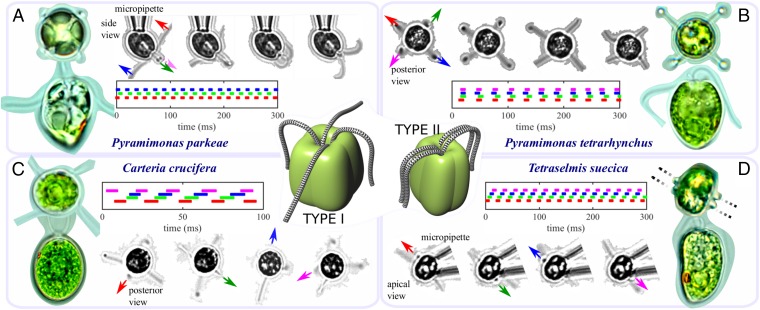Fig. 6.
In free-living quadriflagellates, flagella can be arranged in one of two possible configurations (types I, II)—type II is unusual. Gaits of coordination are diverse and species-specific, including the trot (A), pronk (B), rotary (C), and transverse (D) gallops. Representative species, imaged from top and side, show locations of eyespots and chloroplast structures. Timeseries of phases are measured for pipette-held cells in A and D and free-swimming cells in B and C.

